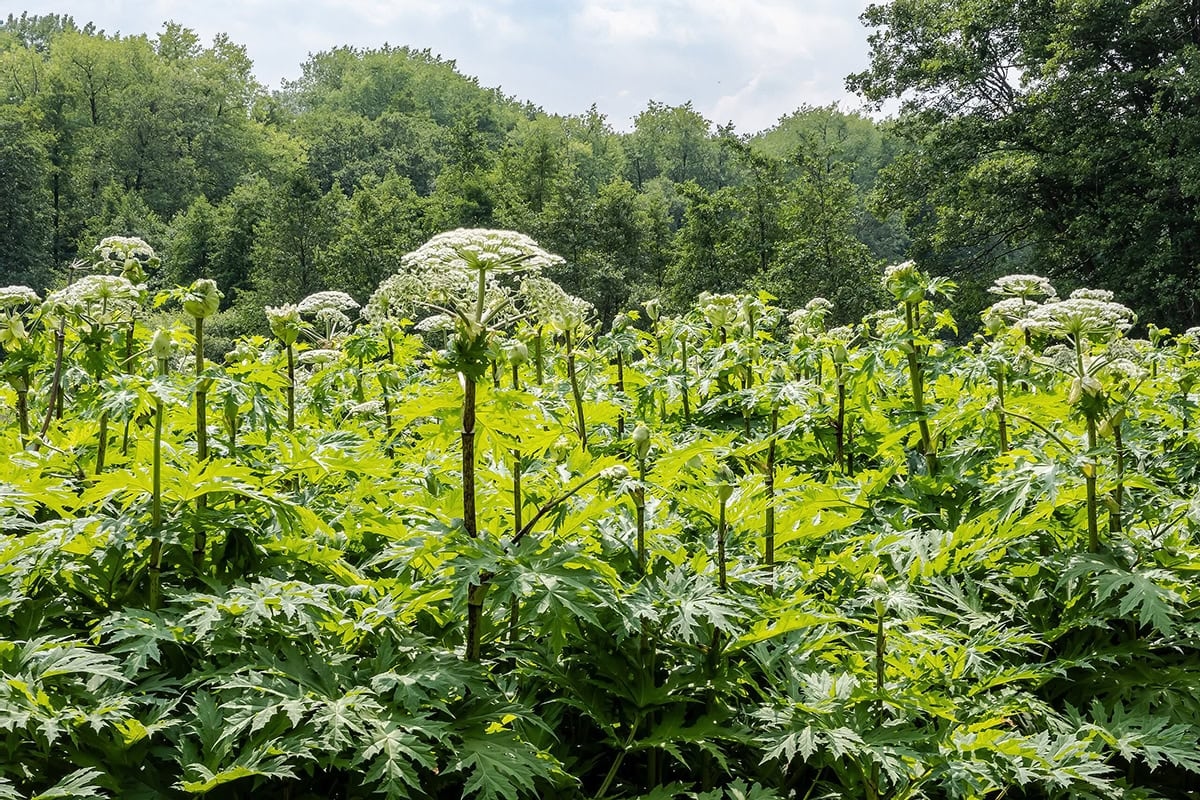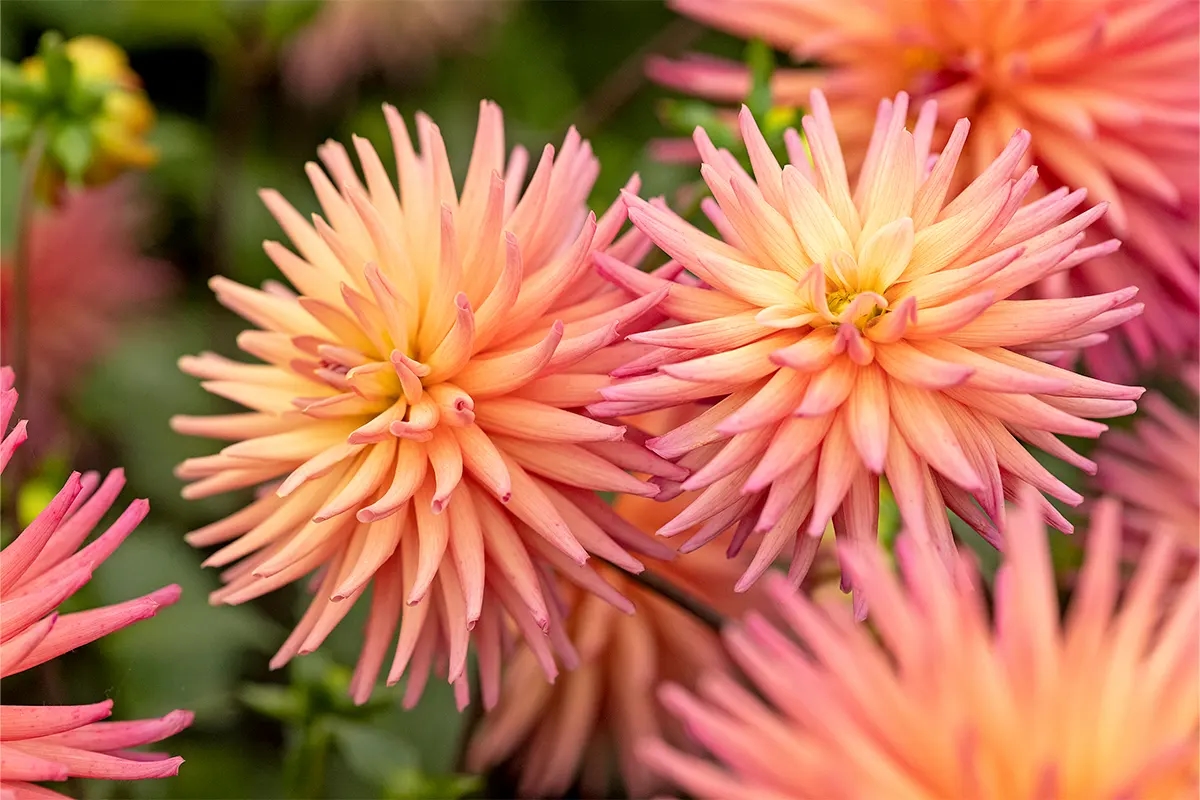Why Giant Hogweed is so Dangerous

Giant hogweed is a magnificent sight, and was therefore brought to the Netherlands as a botanical gem. Unfortunately, this plant is extremely dangerous for both humans and the environment. Read on to learn how to recognize (and confuse) and control it, and what exactly makes it so dangerous.
Read more below the advertisement
First of all, what kind of plant are we actually dealing with here? Giant hogweed ( Heracleum mantegazzianum ) was brought to the Netherlands as an ornamental from the Caucasus around the mid-19th century. Since then, the plant has spread from the Netherlands to the rest of Western Europe, becoming a real pest in some areas.

It's a huge umbelliferous plant, growing up to 4 meters tall. It produces enormous white umbels, which are a favorite with pollinators. The leaves grow very large and appear feathery. The thick, green stem has red tips topped with red bristles. The plant is highly poisonous. Identifying this plant as a weed is also quite easy, as seedlings develop large leaves early on.

The native common hogweed is often confused with giant hogweed, but it's hardly dangerous and stays much smaller, up to a maximum of 2 meters. It's also a very good plant for insects, such as beetles, wild bees , butterflies , and (hoverflies) flies, so it's definitely recommended for a rough corner of the garden! The plant is not poisonous, but it can cause irritation. The seeds are also used as a flavoring in gin and tonic, and (young) shoots can be eaten after preparation.

The danger to humans (and animals) with giant hogweed lies primarily in touching the plant with bare skin. The stem hairs contain a high concentration of furocoumarin . Contact with the spines causes small wounds, and the sap can then cause problems. Depending on the sensitivity of the person who touched it and who has been exposed to the sun, the following can happen:
- After a few hours, large blisters develop, especially after exposure to sunlight. This takes several weeks to heal.
- In severe cases, blood poisoning may occur.
- If the plant sap gets into the eyes, it can cause blindness.
If you've touched giant hogweed, get out of the sun immediately . Then you can do the following:
- Wash the skin as soon as possible with soap and plenty of lukewarm water.
- If you have very few wounds and no or small blisters, you can apply a bandage yourself.
- If you have been badly injured or have large blisters, contact the emergency room immediately.
Prevention is better than cure, so if you have to work with the plant, make sure you take proper protective measures. Make sure children recognize the plants and keep pets, such as dogs, away from them. They can also be affected.

Yes. Giant hogweed is an invasive exotic species , just like Japanese knotweed , and is on the Union list of prohibited species. It is therefore prohibited to sell, plant, sow, or otherwise distribute the plants. If it's already in your garden, it can remain there (but not produce seeds). You can always check garden plants at tuinernietin.nl to see if your plant is potentially invasive.
Its rapid spread displaces native plants by depriving them of light, thus acting as an unwanted cover for weeds . It also creates dangerous situations when grown in areas frequented by people (and pets). There are also known cases in Germany of cross-pollination between the common and giant hogweed.



If you want to remove giant hogweed, proceed carefully or consult a specialist, especially if the plants cover a large area. Here's how to combat giant hogweed:
Especially when giant hogweed is still small, it can easily be confused with, for example, common hogweed or other umbellifers like cow parsley. Use the Obsidentify app to check the plant; it often works very well.
Given the danger of the plant sap, it's wise to wear long, sturdy (rain)clothing that hair can't penetrate. Also, make sure you wear boots, sturdy work gloves, and goggles.
It's wise, especially when the plant has finished flowering, to carefully remove the flowers first. This prevents seeds from falling to the ground and allowing seedlings to grow. It's best to dispose of everything with the general waste . This prevents the plant from spreading elsewhere. Under no circumstances should you put it on the compost heap.
The most effective method is to dig around the root ball. For ease of use, remove the stem first. Make sure you cut the plant down about 20 cm below the ground. Discard the root ball.
The plant may still try to emerge from remaining roots. Remove these as soon as you see them.


Hogweed is a feared plant, but there are also misconceptions about it. Below are some frequently asked questions.
Yes, this one is poisonous and cannot be eaten. The sap is dangerous to touch, but also to ingest. So leave the plant alone and dispose of it safely.

No, the hairs can cause some skin irritation, but that's not necessary. You can even eat the young shoots of the common hogweed ( Heracleum sphondylium ). The older ones should only be peeled. The seeds are also used as a flavoring, for example, in gin and tonic.
Major burns from giant hogweed can take up to two weeks to heal.
Yes and no. Once the plant has dried out, it no longer contains any dangerous sap. However, it is dangerous to take it home for decoration. If you drag this plant home, it will undoubtedly lose seeds, thus contributing to the spread of this invasive, dangerous plant. This is also one of the reasons why you are legally prohibited from taking this plant home.
Tip!
Giant hogweed is appreciated, even for private individuals. This data is used to monitor the plant's spread and to inform where and how to remove it. You can do this with the app mentioned above.



%3Aformat(jpeg)%3Abackground_color(fff)%2Fhttps%253A%252F%252Fwww.metronieuws.nl%252Fwp-content%252Fuploads%252F2025%252F09%252FANP-531134352-1.jpg&w=3840&q=100)

